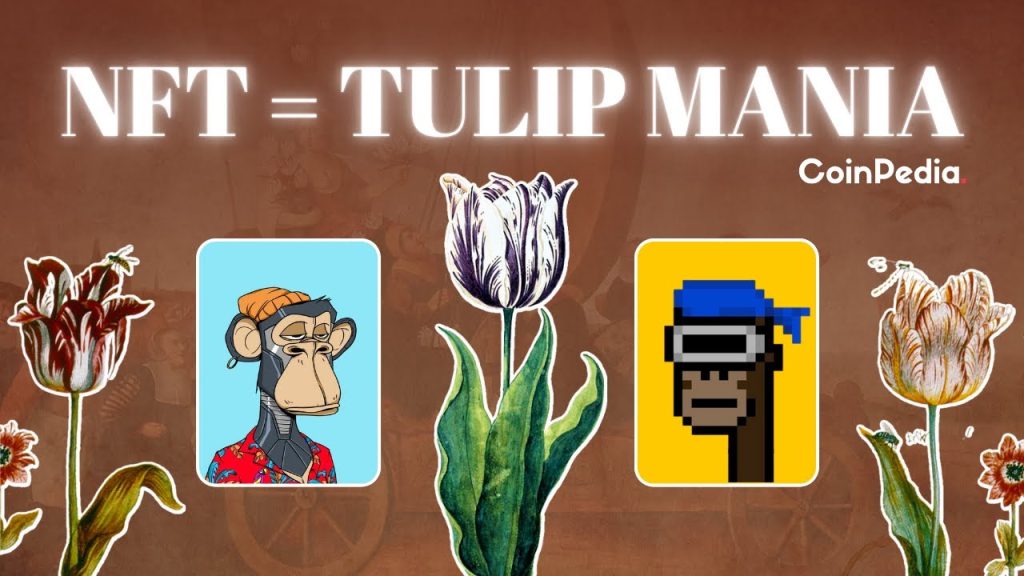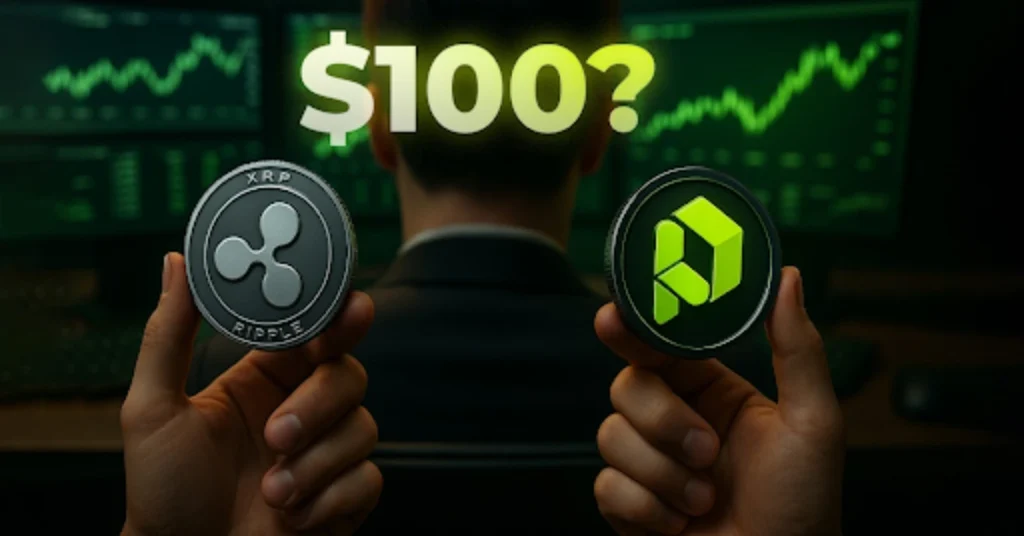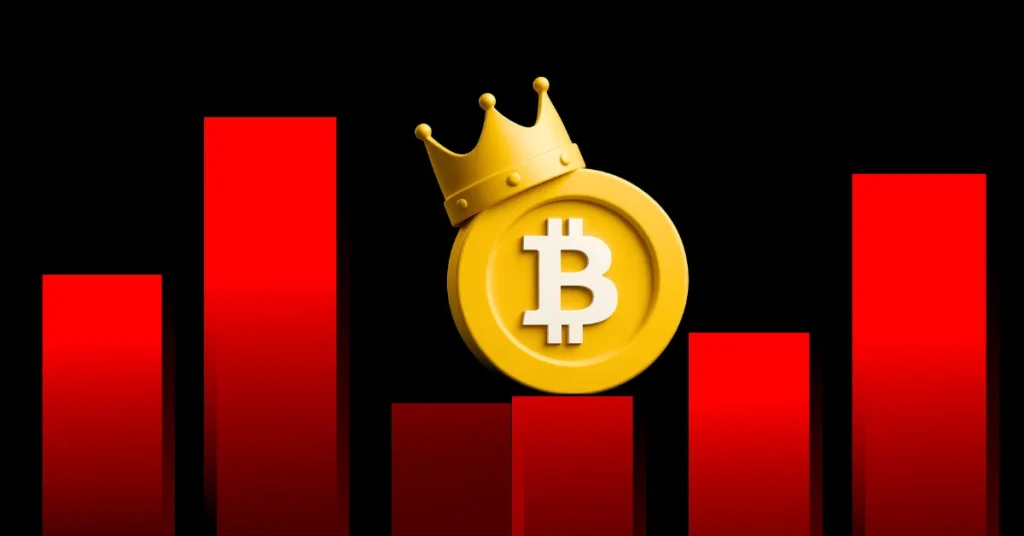
The post NFT Art: A Modern-Day Tulip Mania or Legitimate Investment? appeared first on Coinpedia Fintech News
In the world of digital art, where creativity knows no bounds, a new phenomenon has taken center stage.
A renowned digital artist named Mike Winkelmann, widely known as Beeple created a history by selling an NFT (digital art) for $69.3 Million at a Christie’s auction.
But can you imagine buying something, which doesn’t physically exist?
But as the NFT market explodes with astonishing sales, we can’t help but draw comparisons to a fascinating chapter in history. It takes us back to the 17th century, to a time when tulips ignited a frenzy that gripped the entire nation.
But what does it all mean? Is this NFT mania reminiscent of a bubble ready to burst?
Are we witnessing history repeat itself?
Are NFTs the modern-day tulips, destined for a similar fate?
To understand the parallels, let’s take a step back in time to the 17th century when tulips became more than just flowers in the Netherlands.
History of Tulip Mania
Firstly, let’s take a look at the history of Tulip Mania.
It all began in the 1630s when Dutch merchants were introduced to the alluring beauty of tulips, thanks to their trade connections with the Ottoman Empire. These vibrant flowers, so exotic and enchanting, quickly became a symbol of prestige and wealth.
At the peak of Tulip Mania, tulip bulbs were more than the entire garden decorations. In the year 1633, it has been reported that one of the most popular varieties, the Semper Augustus, was sold for 5,500 guilders, equivalent to 10 times the annual income of a skilled artisan.
The market craze surrounding these delicate flowers was exceptional. People from all walks of life were caught up in the excitement, eager to get their hands on these precious bulbs. Some even sold their homes, land, and other assets to buy tulip bulbs.
By the beginning of 1637, the prices for other tulip varieties were similarly raised and one of the most popular varieties, the Semper Augustus, was sold for 10,000 guilders, enough to buy a grand house in one of Amsterdam’s most desirable districts.
One of the infamous writers Anne Goldgar mentioned in her book “Tulipmania” that “People began buying tulips with leverage, using margined derivatives contracts to buy more than they could afford.”
Indeed, it seemed at the time that the price could only go up, that “the passion for tulips would last forever.”
But, as with any bubble, it was bound to burst.
Downfall Of Tulip Mania
In February 1637, tulip prices fell by 90% to their pre-mania levels, when the market for tulip bulbs suddenly crumpled. Eventually, most of this rapid decline was due to people buying bulbs on credit, hoping to repay their loans after selling them for a profit.
When the price of tulip bulbs began to drop, holders were forced to sell their bulbs at any price and declare bankruptcy. Later, the Buyers announced that they could not pay the high price previously agreed upon for bulbs, and the market completely fell apart.
According to some experts, it is believed that it was because of the oversupply of tulip mania, and also due to the intervention of the Government.
However, the exact reasons for the sudden fall of the tulip market during the Tulip Mania in the Netherlands are still debated by historians. But, the crash had widespread effects on the Dutch economy, many people lost their life savings, and many investors were bankrupted.
One of the renowned Dutch painters Jan van Goyen, who allegedly lost everything in the tulip crash. Although, he never recouped his losses, and he died insolvent. Many people were left with worthless bulbs that they had spent a fortune on, the tulip mania was over, and people were left to pick up the pieces.
Now, let’s fast forward to the present day and talk about why people consider NFTs to be the next Tulip Mania.
Many crypto analysts compare the current NFT hype to the Tulip Mania because of the crazy prices that some digital assets are fetching. But before we make any judgments about the tulip bubble burst, let’s learn all about NFT.
Overview of the NFTs Market
NFTs, or non-fungible tokens, are digital assets that are unique and cannot be replicated. They are bought and sold using cryptocurrency and have been making headlines for the insane amounts of money they’re being traded for.
NFTs began to gain attention in 2017, with the launch of CryptoKitties, a blockchain-based game that allows players to buy, sell, and breed digital cats. The game was a hit, with some CryptoKitties selling for more than $100,000.
Since then, NFTs have been used in a variety of contexts, from digital art to music to virtual real estate, apparently, many people are spending millions on digital artwork, videos, and even tweets.
One of the most popular examples of NFTS is CryptoPunks which have gained significant attention in the crypto space.
CryptoPunks are a collection of 10,000 unique 8-bit style pixel art characters, each with its distinct features and attributes, such as hairstyle, clothing, and accessories. The collection was created by Larva Labs, a software development studio.
Each CryptoPunk is unique and can be owned and traded as an NFT on the Ethereum blockchain. For example, in March 2021, a single CryptoPunk, an NFT created by the artist Beeple sold for a record-breaking $69 million at a Christie’s auction.
“That’s a lot of money for something that doesn’t physically exist.” But just like with the Tulip Mania, some experts believe that the NFT market is due for a crash.
One of the renowned crypto analysts John Smith believes that “NFT art is just another Tulip Mania waiting to happen”
So, what are the similarities between Tulip Mania and NFTs? & Why do these people believe that it will crash?
Comparison of NFT With Tulip Mania
NFTs are unique digital assets that can be authenticated on the blockchain, whereas tulips were just flowers with no inherent value. And just like with tulips, there’s a sense of exclusivity around NFTs – owning a vone-of-a-kind digital asset is something that not everyone can do.
People are buying NFTs based on the belief that their value will only increase, much like how tulips were bought and sold purely based on the belief that their prices would continue to rise.
Also, NFTs have the potential to revolutionize the art market by allowing artists to sell their work directly to buyers without the need for intermediaries.
But with that said, some risks are still involved in buying NFTs. One major concern is the lack of regulation in the NFT market, which makes it vulnerable to scams and fraud.
Another issue is the environmental impact of NFTs, as the blockchain technology used to create and trade them consumes a lot of energy.
Downtrend of the NFT Market
While there have been some NFT projects that experienced a rapid increase in value before seeing a significant decline, similar to the way that tulip bulbs were overvalued during the tulip mania.
One example of this is the project known as Bored Ape Yacht Club.
Bored Ape Yacht Club, or BAYC, is a collection of 10,000 unique digital ape NFTs. The project gained popularity in mid-2021, with some BAYC apes selling for over $1 million.
However, in September 2021, the value of BAYC apes and other NFTs began to decline significantly, with some BAYC apes selling for less than half of their previous values.
It’s worth noting that the decline in the value of NFTs and projects like BAYC may be due to a variety of factors, including market saturation, changing market trends, and fluctuations in the overall cryptocurrency market.
Impact of 2022 Bearish Market on NFT
A bearish market of 2022 played a significant role in taking down the NFT market. As a result, some NFT projects saw their trading volumes decline, and some NFT artists and creators may have had to lower their prices to attract buyers.
During the period between May and August 2022, DappRadar’s analytics platform reported a 99% decrease in trade volume on OpenSea, the world’s largest NFT marketplace.
Even the base price of NFTs was directly impacted when the price of Ethereum fell by more than 50%. Despite these challenges, the NFT market remained resilient, with some projects continuing to attract a loyal following.
As with any investment, it’s important to do your research and exercise caution before investing in NFTs or cryptocurrencies.
Analysis of the Future
So, what does the future hold for NFTs?
Will they continue to rise in value, or will they eventually suffer the same fate as tulip bulbs?
“Only time will tell, but one thing is for sure – NFTs are here to stay.”
Because, they’re changing the way we think about ownership, creativity, and the value of digital assets.
Eventually, NFTs can be utilized for solving real-world problems, like, by creating an NFT that represents a particular property or asset, it can be easily bought, sold, and traded without the need for a physical deed or certificate.
NFTs can also be used to verify identities and prevent fraud. By creating an NFT that represents a particular individual, it can be used to verify their identity across various platforms and systems.
NFTs can be used to support charitable causes by creating unique digital assets that are sold to raise funds. For example, the NFT for the famous “Disaster Girl” meme was recently sold for $500,000, with proceeds going to the original creator and charity.
Conclusion
However, the tulip mania and the NFT craze may seem like vastly different phenomena, but they share more similarities than we might think. They’re both driven by the human desire for exclusivity and status, and they both show the power of a collective delusion.
Well, it’s too clear that the NFT market is still in its early stages and is subject to a lot of volatility and risk.
But with the right regulations and sustainable practices, it’s possible that NFTs could become a legitimate and valuable asset class.

 2 years ago
128
2 years ago
128














 English (US) ·
English (US) ·